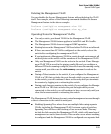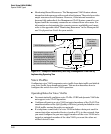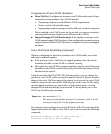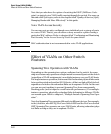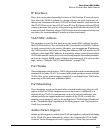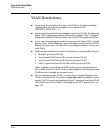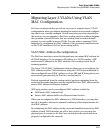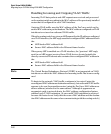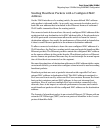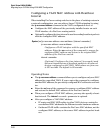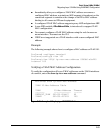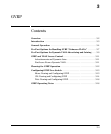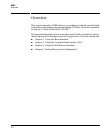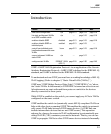
Static Virtual LANs (VLANs)
Migrating Layer 3 VLANs Using VLAN MAC Configuration
Sending Heartbeat Packets with a Configured MAC
Address
On the VLAN interfaces of a routing switch, the user-defined MAC address
only applies to inbound traffic. As a result, any connected switches need to
learn the new address that is included in the Ethernet frames of outbound
VLAN traffic transmitted from the routing switch.
If a connected switch does not have the newly configured MAC address of the
routing switch as a destination in its MAC address table, it floods packets to
all of its ports until a return stream allows the switch to learn the correct
destination address. As a result, the performance of the switch is degraded as
it tries to send Ethernet packets to an unknown destination address.
To allow connected switches to learn the user-configured MAC address of a
VLAN interface, the ProCurve routing switch can send periodic heartbeat-like
Ethernet packets. The Ethernet packets contain the configured MAC address
as the source address in the packet header. IP multicast packets or Ethernet
service frames are preferred because they do not interrupt the normal opera-
tion of client devices connected on the segment.
Because the aging time of destination addresses in MAC address tables varies
on network devices, you must also configure a time interval to use for sending
heartbeat packets.
Heartbeat packets are sent at periodic intervals with a specific ProCurve
unicast MAC address in destination field. This MAC address is assigned to
ProCurve and is not used by other non-ProCurve routers. Because the heart-
beat packet contains a unicast MAC address, it does not interrupt host
operation. Even if you have multiple ProCurve switches connected to the
network, there is no impact on network performance because each switch
sends heartbeat packets with its configured MAC address as the destination
address.
The format of a heartbeat packet is an extended Ethernet OUI frame with an
extended OUI Ethertype (88B7) and a new protocol identifier in the 5-octet
protocol identifier field.
2-67



